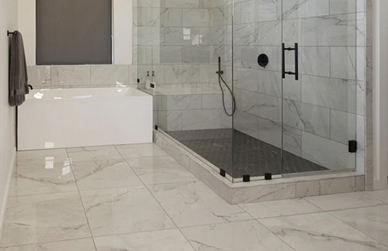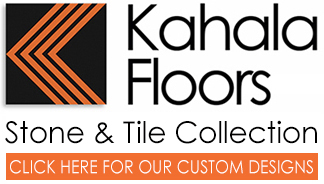Stone & Tile
One of its many advantages of natural stone flooring is timeless elegance. Compared to ceramic tile, homes that use natural stone really become outdated and increases home value. Natural stone flooring is mined from a quarry and is cut directly from stone blocks. Just like real wood, no two pieces are ever identical. Lack of availability does drive up the price of natural stone.
Marble, one of the most popular natural stones, is mostly known for light coloring, dramatic veining, smooth texture, and high-gloss finish. Unfortunately, it stains and etches easier than other natural stones.
Travertine, also a popular choice, is often beige or cream in color. Its pores or pits are usually filled to create a smoother finish. Although they can be left unfilled for exterior applications for slip resistance (available in a variety of finishes)
Limestone is often beige in color forms in shallow marine water. Fossilized shells, corals, and algae can be seen in the rock. It is softer than both Marble and Travertine.
Quartzite is a type of flagstone that has a rough, grey/gold appearance and is quite durable. Its most frequently used in exterior applications, like walkways, driveways and patios. Slate is known for its medium to dark grey coloring and hardness. It can be used for both indoor and outdoor applications. Although hard, its very brittle and can flake or shale.
If natural stone isn’t in the budget or is not available, ceramic and porcelain can offer you a pretty good likeness. Porcelain and ceramic tiles upon appearance look the same. Both are made from clay, but the difference lies in the temperature and type of clay used. Porcelain tiles are made from refined clay and are kiln-fired at a high temperature, making them highly durable and non-porous. Ceramic tiles are made of less fine clay at a lower temperature, and the outcome is less dense and more porous. Due to digital printing both ceramic and porcelain come in endless patterns, colors and several different sizes and finishes. Porcelain tiles offer additional features like rectified edges for tighter grout lines and color body center to make chipping less evident. Porcelain is recommended for flooring, but ceramic still has its place for low traffic areas and wall applications.









